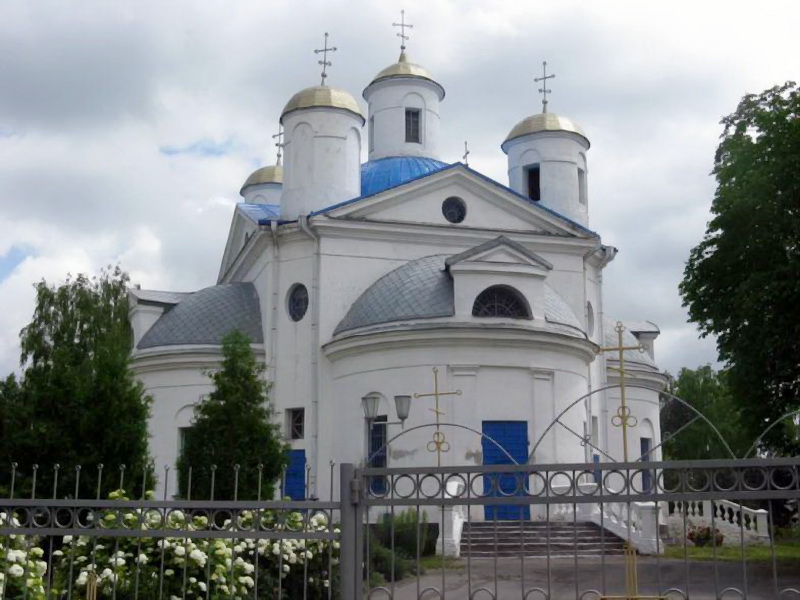- Home
- →
- Attractions
- →
- Church of Intercession in Streshin
Church of Intercession in Streshin
Streshin Church is a rare example of centric architecture in Belarus. Its composition is symmetrical: equal semicircular annexes adjoin the main quadrangle, one of which serves as the altar. The architecture of the church has a secular character—there are no traditional apses, but it features wide windows, three grand entrances, and balustrades. Its austere exterior emphasizes the volumetric design and the dome’s plasticity.
Interior and mysteries of Streshin Church
According to the memories of local elders, the church was renowned for its frescoes, intricately carved iconostasis, paintings of evangelists, and mosaic floors. A particularly intriguing feature is its heating system—without radiators or stoves, the church remained warm even during severe frosts. This architectural phenomenon remains unexplained.
History of the church’s construction
Streshin Church was founded in 1807 by Count Ivan Andreyevich Osterman, a Russian state chancellor and a Knight of the Order of St. Andrew the First-Called. This fact was recorded on a lead plaque discovered during the restoration of the church in the late 1980s. The church was consecrated in 1811.
Saint Righteous John of Korma and parish life
One of the first priests of the church was Father John Gashkevich, the father of the future Saint John of Korma. The saint was born in 1837 in a priest’s family, helping in the church from childhood and becoming known for his righteous life. His prophecies about future events came true, and his memory remains alive among believers. The church houses an icon of the saint with a relic fragment.
Late 19th – early 20th century: parish development
By the late 19th century, Streshin was a volost center, and the Holy Protection Parish included several villages. In 1910, an important event took place—the transfer of the relics of Saint Euphrosyne of Polotsk. The steamship carrying the relics stopped in Streshin, where local residents welcomed the relics with prayers and church bells.
Revolution and years of neglect
After the 1917 revolution, the church suffered the fate of many Orthodox shrines—it was closed, looted, and its interior was destroyed. During the Soviet era, it was used as a fertilizer warehouse, a stable, a club, and later a restaurant. Even the 1982 restoration only caused harm—the frescoes were painted over, and niches with murals were bricked up.
Revival of the shrine
In the 1990s, restoration of the church began under the leadership of Father Vasily Pilipenko. The work was supported by local residents, enterprises, and authorities. In 1991, the grand consecration of the church took place, led by Bishop Aristarch of Gomel and Mozyr. Today, the church is an important religious center in the region.
Streshin Church in tourist routes
Today, the church is included in the tourist route "Golden Ring of Gomel Region" and welcomes pilgrims from all over Belarus. Here, visitors can admire unique architecture, immerse themselves in history, and learn more about Saint Righteous John of Korma. If you wish to visit this church, we recommend booking a tour of Belarus and discovering the country’s spiritual heritage.

